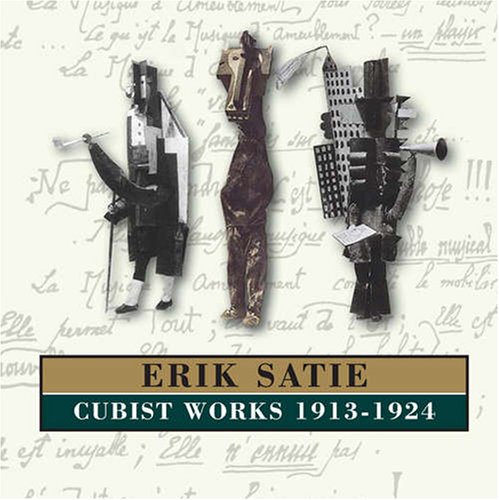
Ronald Corp / Cologne Symphony Orchestra
Bojan Gorisek, piano
Although this music cannot and should not be considered truly "cubist," for whatever technique one might use to create "cubist music" Satie didn't use, Satie was a strong proponent of the style as well as a friend to the painter most readily associated with Cubism, Pablo Picasso.
This program includes the two large collaborations between Satie and Picasso, the ballets Parade (1917) and Mercure (1924) in both their piano and orchestral versions, along with three short pieces; the organ "Divertissement: La Statue Retrouvée," written for a masquerade ball that contained a short choreography with designs by Picasso, and "Trois Valses distinguées du précieux dégoûté," a suite written as a malicious jab at Ravel's stately piece.
Erik Satie's schizophrenic body of work has resisted canonization by the classical establishment in favor of avant-garde adulation and popular ubiquity: by turns, he’s either Vexations, paving the way for aleatory and process music, or he’s the superb, cinematic mood music of Gymnopédies. In the vacillation between these poles, we find the notion of "Furniture Music," which, as Brian Eno would articulate much later, is as excellent as it is ignorable. This recording draws out the explicit links between Satie’s work and the frenetic, sectarian art world of Paris in the late 19th and early 20th centuries.

Claire Chevallier, piano
The aim of this rather challenging disc, according to pianist Claire Chevallier in her erudite, thoughtful, and yet entertaining booklet notes, is to demonstrate "the existence of a continuous line of thought in Satie's life." The line of thought under discussion is Satie's unorthodox spirituality, which was by all accounts closely linked to his music. This murky, incantory yet rigorous recording highlights the mystic spirituality of Satie.
He flirted with Rosicrucianism (in a distinctive Parisian sect also attractive to Debussy) but loved to visit Notre-Dame. Later he founded a single-member church of his own, which he called the "Eglise Métropolitaine d'Art de Jésus Conducteur." The musical counterparts to these ideas were stark harmonies and modal tunes derived from Satie's studies of chant and medieval music. A lovely CD that features a beautiful look at both Satie's well-known works and his more cerebral.

No comments:
Post a Comment